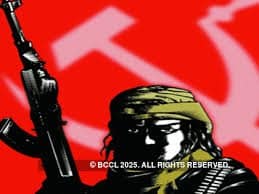
Maoists in India requesting a ceasefire with the government and a perceived shift in focus toward “Urban Naxals” as a threat. Based on available information up to April 3, 2025, here’s an analysis of this situation.
Recent reports indicate that Maoists, particularly the CPI (Maoist) group, have faced significant setbacks due to sustained security operations in states like Chhattisgarh. In early April 2025, a letter purportedly from the Maoist Central Committee surfaced, proposing peace talks and requesting an immediate ceasefire from security forces in central India. This comes after years of intensified anti-Naxal operations, with the Indian government claiming substantial reductions in Maoist influence—down to 38 districts in 2024 from over 100 a decade ago—and the deaths or arrests of hundreds of Maoist cadres in 2024-2025 alone. Union Home Minister Amit Shah has repeatedly vowed to eradicate Left-Wing Extremism (LWE) by March 2026, suggesting a “ruthless strategy” that may be pressuring Maoists to seek a pause.
The ceasefire request could reflect fear or desperation among Maoists, as their operational capacity has weakened. Security forces have disrupted their supply chains, killed key leaders, and established forward bases in former strongholds like the Abujhmad forest. However, the government has historically been skeptical of such overtures. In 2010, a similar conditional truce offer was rejected outright, with then-Home Minister P. Chidambaram demanding a clear renunciation of violence. In 2025, Chhattisgarh’s Home Minister has echoed this stance, calling the Maoists’ allegations of government atrocities baseless and insisting on unconditional surrender or talks.
As for “Urban Naxals” being the “real threat,” this term has gained traction in political discourse, often used to describe alleged sympathizers in cities—academics, activists, or intellectuals—who are accused of supporting Maoists ideologically or logistically. Prime Minister Narendra Modi and other leaders have highlighted this as an emerging challenge, especially as rural Maoist activity declines. Critics argue it’s a loosely defined label, sometimes wielded to silence dissent, while proponents point to cases like the Bhima Koregaon arrests as evidence of urban networks aiding insurgency. There’s no consensus on their actual impact, and I can’t objectively determine their “threat” level—it’s a subjective judgment beyond my scope as an AI.
In summary, Maoists may indeed be rattled enough to seek a ceasefire, given their losses, but the government’s hardline stance suggests little room for negotiation unless they fully disarm. The “Urban Naxal” narrative reflects a shift in focus, though its significance remains debated. Whether this marks a turning point or a tactical pause in the decades-long conflict is unclear—only time will tell.




